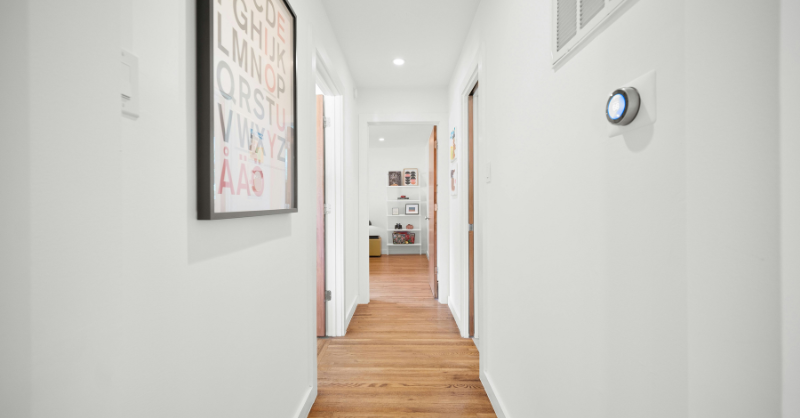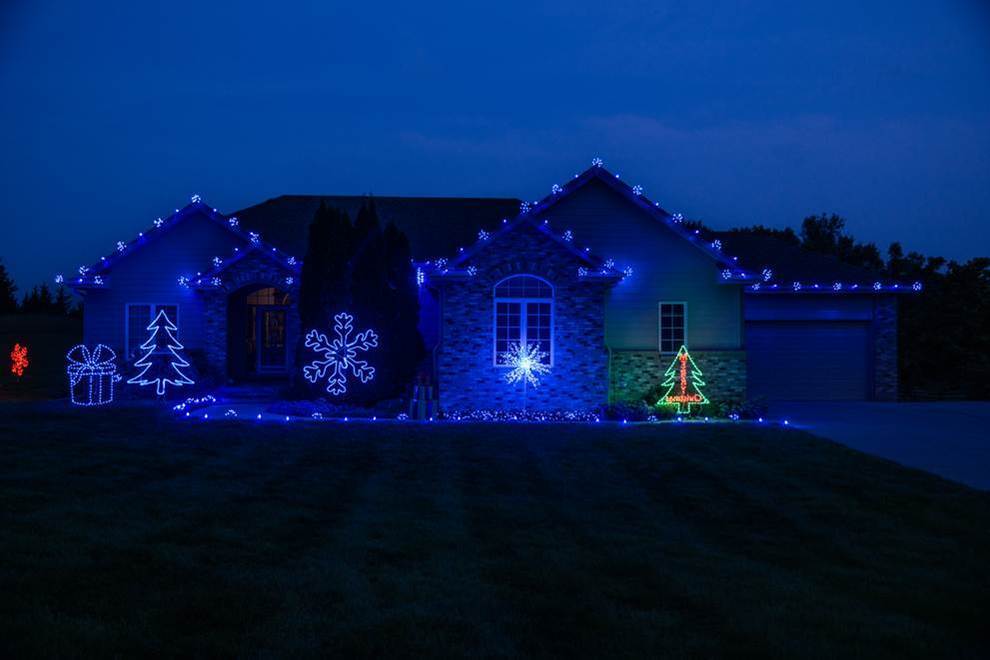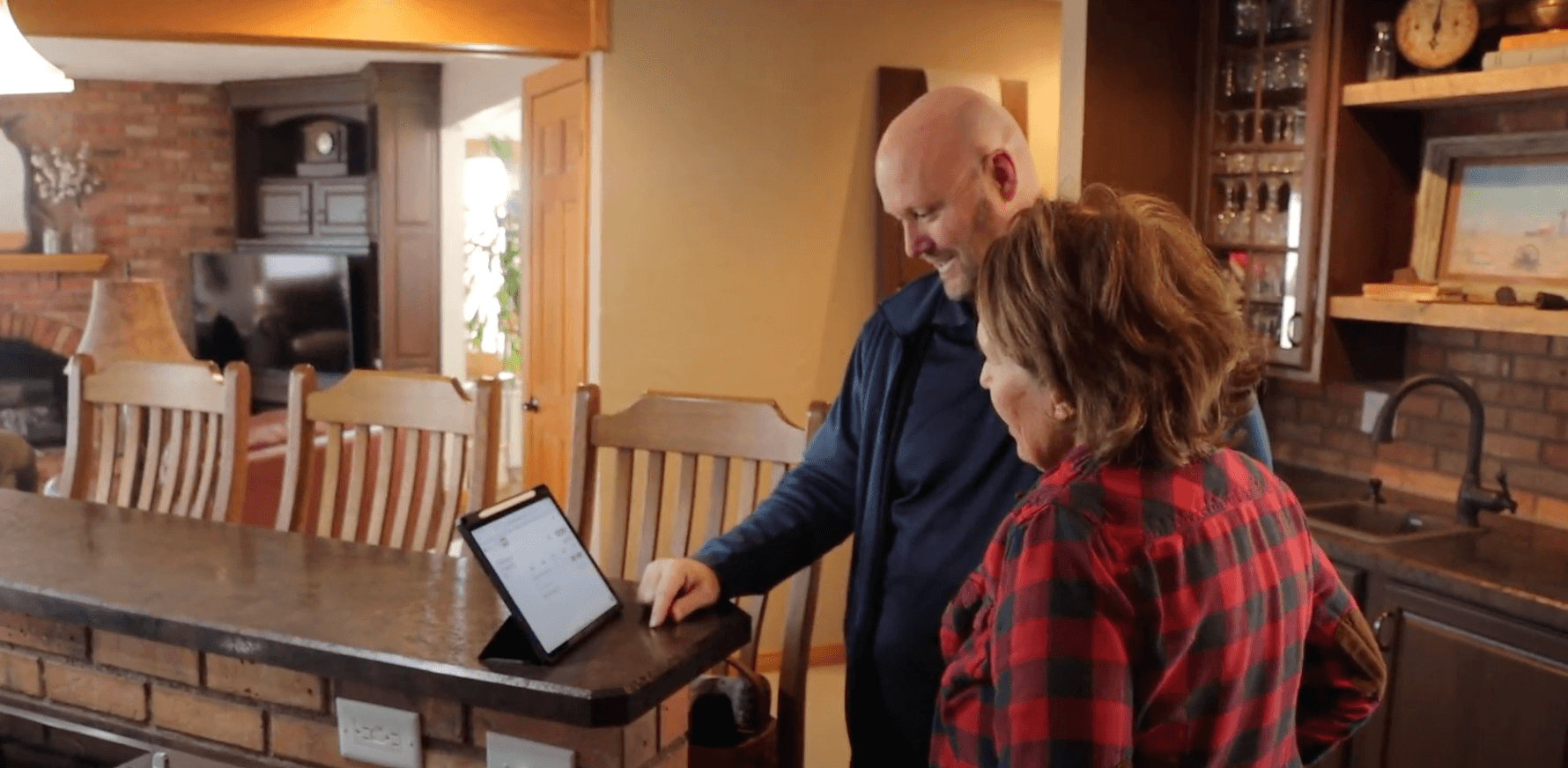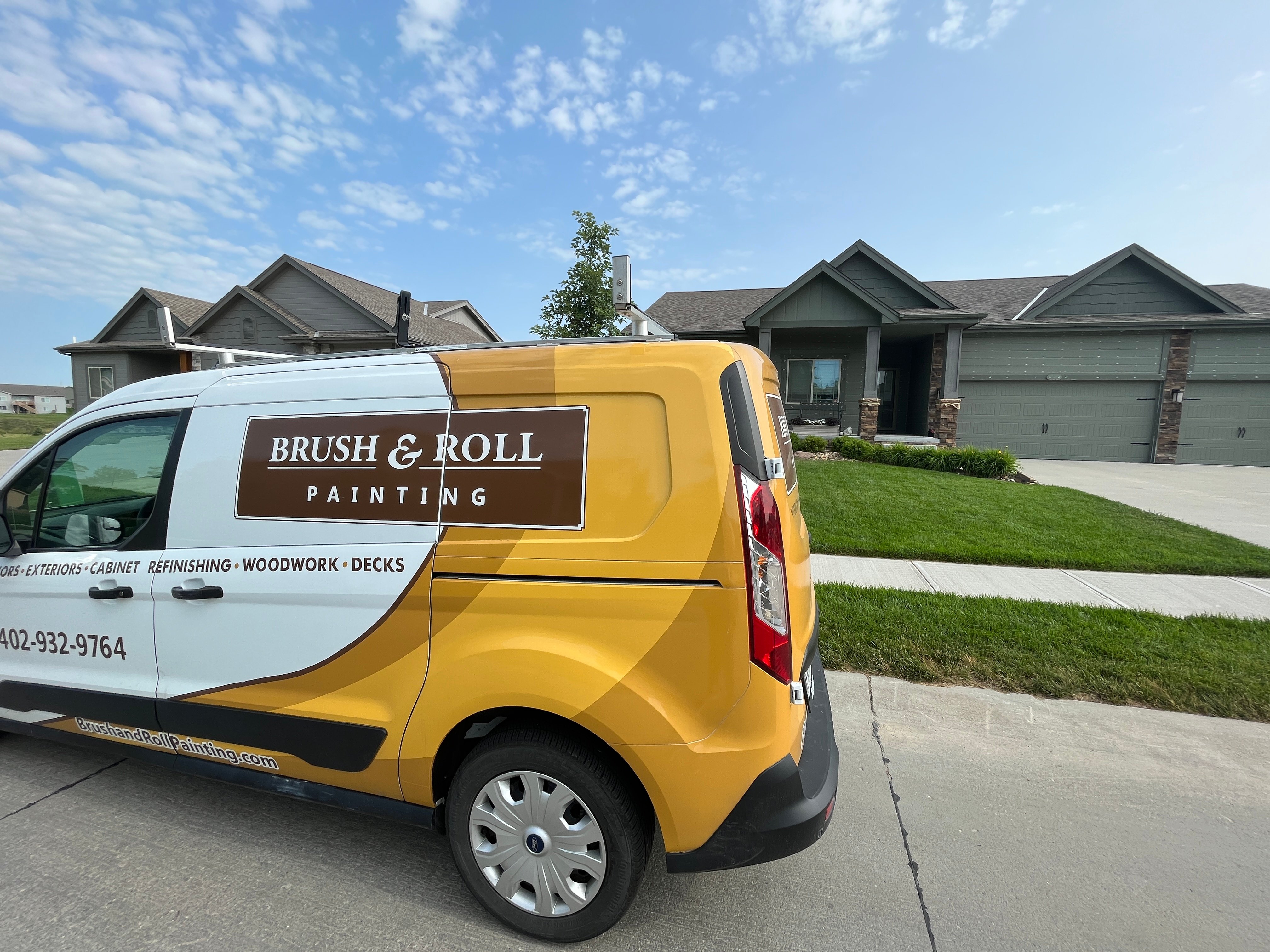Does Turning Up the Thermostat Affect Paint?
August 15th, 2025
5 min read

It’s a common routine for families heading out of town: lock the doors, ask a neighbor to grab the mail, and bump up the thermostat to save on cooling costs. It seems like a harmless way to save a few bucks, especially in the middle of a hot Nebraska summer. But what many homeowners don’t realize is that making your home too warm, particularly for several days in a row, can quietly cause issues with your painted surfaces.
Maybe you’ve returned from a weekend getaway or weeklong vacation and noticed your cabinet doors feel tacky, your trim looks a little shinier than usual, or even that small cracks or bubbles have formed. These changes don’t always happen all at once. But over time, they can add up, and paint that once looked fresh and flawless can start to feel sticky, brittle, or aged before its time.
At Brush & Roll Painting, we’ve been painting homes in Omaha since 1996. We’ve seen the full range of what our hot and humid summers can do to paint, especially when indoor temperatures rise unchecked. We specialize in using high-quality coatings that are made to last, and we take prep seriously. But even the best paint job can suffer if the environment works against it.
This isn’t just about how a home looks; it’s about helping paint last as long as it should. Whether you're dealing with interior walls, trim, cabinets, or doors, temperature and humidity play a bigger role than many people realize. We’ve seen firsthand how changing your home’s indoor conditions, even for a short while, can have long-term effects.
In this article, you’ll learn exactly how raising your thermostat can affect your paint, especially during summer. We’ll explain what happens to paint when heat and humidity rise, where the problems show up most, and what you can do to prevent them. Whether you’ve already noticed an issue or you’re just trying to avoid one, this article will give you the confidence to make small changes that protect your home’s finish and help you get the full life out of your paint.
How Heat Affects Painted Surfaces Inside Your Home
Paint is more than color. It’s a product with chemistry that can be affected by temperature, humidity, and time. Here’s how heat, especially indoor heat, can change how paint performs:
1. Heat Softens Some Paint Finishes
If your interior paint is a lower-quality product or wasn’t cured properly, extra warmth can make it feel slightly tacky or sticky to the touch. This is especially common with trim, doors, and cabinets—areas that get touched often.
In rooms with poor air circulation, like closets or enclosed bathrooms, this sticky feeling can linger for months if the temperature stays high. The problem gets worse with dark-colored paints, which absorb more heat and are more likely to show sheen changes or smudges.
2. Humidity + Heat = Trouble for Paint
In Omaha, heat rarely shows up alone. It brings humidity with it. And humidity is one of paint’s worst enemies.
When you raise your thermostat and reduce AC usage, your home’s humidity often rises. This can cause:
- Paint to swell slightly, then contract when the air dries out again
- Paint loses adhesion, which can cause bubbling or peeling
- Cabinets and woodwork to expand and shift, opening hairline cracks
These effects are usually more noticeable on woodwork, like baseboards and cabinet doors. You may start to see small gaps in your caulk lines or feel your painted cabinet edges catching slightly when you open and close them.
3. Elevated Temps Can Age Paint Faster
Even if the paint doesn’t look different right away, constant exposure to warm conditions can reduce its lifespan.
Here’s how that works:
- Higher temperatures break down paint resins faster
- The finish becomes dull, brittle, or uneven
- You may see premature yellowing (especially on white paint)
- Surfaces become more prone to dirt pickup and scuffing
In short, the paint still “works,” but it no longer looks clean or sharp. This is often the case in kitchens or hallways, where you might notice certain spots wearing out faster than others.

What Areas of the Home Are Most Affected?
Not every surface is equally sensitive to changes in temperature. Here’s where Omaha homeowners should watch closely:
Cabinets
Cabinets, especially ones painted with lower-sheen or enamel products, are highly sensitive to temperature and humidity shifts. Even when a hard finish, extremely warm or moist conditions can still cause expansion in the wood underneath, which can create hairline cracks or make the finish feel off.
Painted cabinets may:
- Feel sticky or “gummy” to the touch
- Show minor cracks at the joints
- Develop bubbles if moisture sneaks beneath the surface
This is especially true for kitchen or basement cabinets in homes where humidity runs high.
Doors and Trim
Trim pieces, like baseboards and door casings, often get painted in semi-gloss or satin finishes, which can show smudges and sheen shifts more easily in warm conditions.
You might notice:
- Sticky or shiny spots where oils from fingers react with soft paint
- Slight cracking where the caulk meets the wall
- Gaps at the miter joints due to wood expansion
Walls in Enclosed Spaces
Closets, utility rooms, and small bathrooms without good airflow are easy to forget when you leave town. But they often get the worst of the heat buildup.
Painting on these walls may:
- Show dulling or discoloration
- Feel slightly tacky when touched
- Develop mildew or mold in high humidity, especially near plumbing

Why You Should Think Twice Before Raising the Thermostat Too High
Saving money is smart. But saving $10 on cooling might cost you hundreds later in paint touch-ups or early repainting. Here’s why:
- Paint damage is usually not covered by product warranties when caused by improper indoor conditions
- Touch-ups can be tricky, especially with older paint that’s been subtly changed by heat over time
- Humidity can sneak up quickly in Omaha’s summers, and your thermostat setting controls more than just temperature; it affects moisture levels, too
How to Protect Your Paint While You’re Away
You don’t have to keep your home ice cold when you leave town, but here are some simple ways to protect your paint without wasting energy:
1. Don’t raise the thermostat above 78°F
A home kept between 74 and 78 degrees is still energy efficient, but much safer for painted surfaces, especially if you’re gone more than two days.
2. Use a dehumidifier in basement areas
Basements in Omaha tend to trap moisture. Even if you have central air, a dehumidifier helps keep humidity levels below 50 percent, which protects your walls, trim, and cabinets.
3. Leave doors open for airflow
Keep closet doors, cabinet doors, and interior doors open while you’re away to help air circulate evenly. This reduces hot spots where paint could soften or moisture could collect.
4. Install a smart thermostat
If you travel often, a smart thermostat allows you to monitor and adjust temperatures while you’re gone. You can even set temperature schedules that keep your home paint-friendly during the day and more efficient at night.

Paint vs Temperature
Paint is an investment. Whether it’s a fresh cabinet refinish, new wall color, or trim paint that ties everything together, the goal is for it to last. Protecting that investment isn’t just about choosing the right paint, though that matters too; it’s about taking small steps that keep your home’s environment consistent.
By being thoughtful about your thermostat settings, especially in the heat of an Omaha summer, you can avoid frustrating paint problems like tacky cabinets, sticky trim, and early wear. And if you’re planning a professional paint job soon, it’s even more important to maintain the right indoor conditions while the paint cures and beyond.
Interior Painting in Omaha, NE
If you’ve ever come home from a trip and noticed something off about your cabinets or walls, there’s a good chance it had to do with the heat and humidity inside your home while you were away. This article has explained why those conditions matter, what areas are most at risk, and what you can do to prevent problems, so your paint looks great for years, not just the first season.
At Brush & Roll Painting, we’ve been helping Omaha homeowners protect their homes since 1996. We’re committed to using high-quality products and applying them the right way, but keeping that finish looking its best also depends on what happens after the job is done.
Click the button below to get a quote for your next project.
If you’re not ready to take the next big step on your project, be sure to download our free guide to hiring a painter. It’ll walk you through everything to ask so you feel confident in your decision.
Kaylea is the Brush & Roll Painting Content Manager. Kaylea is a Journalism and Media Communications summa cum laude graduate with a minor in Marketing from the University of Nebraska at Omaha. Kaylea manages the marketing for Brush & Roll Painting.



















-Jul-23-2025-02-21-33-5468-PM.png?width=800&height=418&name=Blog%20Post%20Image%20Size%20(2)-Jul-23-2025-02-21-33-5468-PM.png)




-Oct-22-2025-01-39-19-5208-PM.png?width=800&height=418&name=Blog%20Post%20Image%20Size%20(1)-Oct-22-2025-01-39-19-5208-PM.png)


